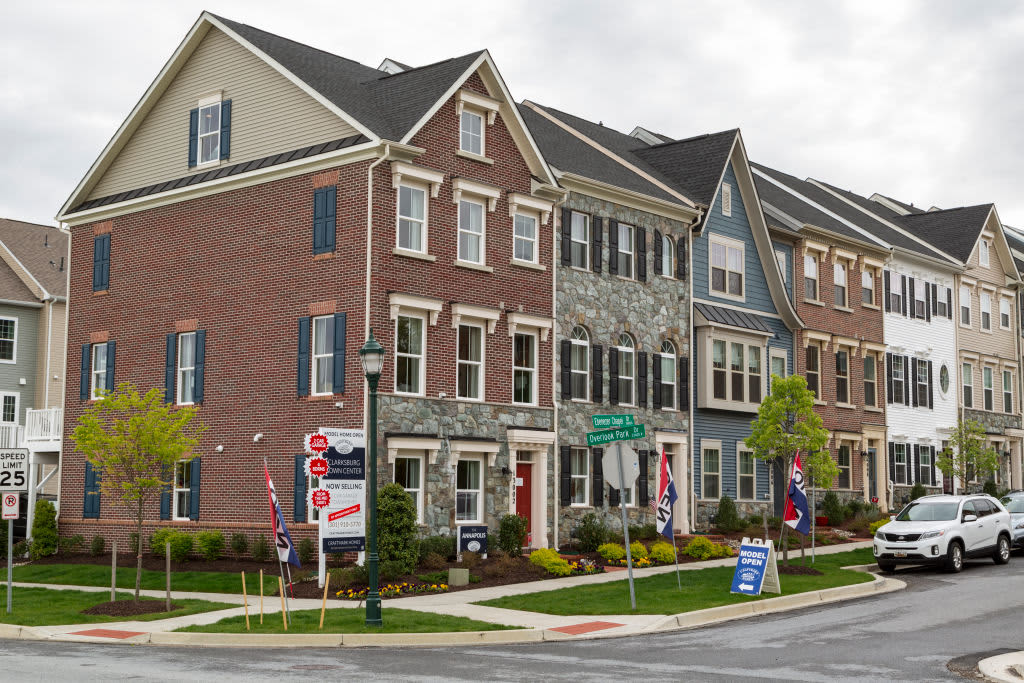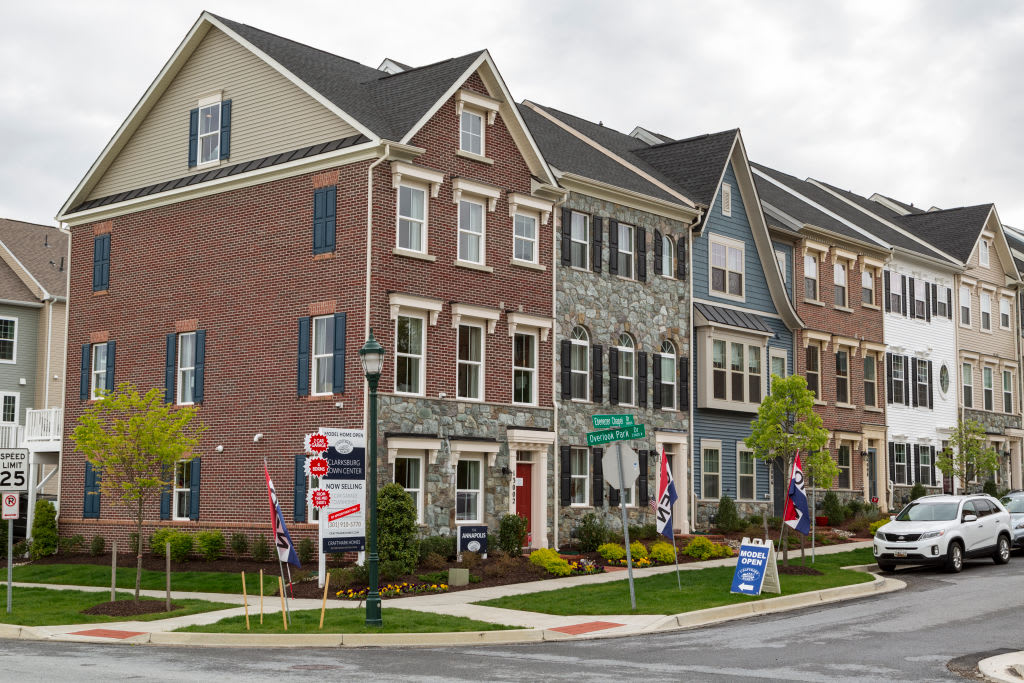
The Annapolis Townhome model at Clarksburg Town Center on April 28, 2020 in Clarksburg Maryland.
Benjamin C. Tankersley | The Washington Post | Getty Images
In one of the brightest economic readings since the start of the coronavirus pandemic, sales of newly built homes rose nearly 1% in April compared with March, according to the U.S. Census.
While that may not seem like a lot, they were expected to fall 22%.
Builders have been reporting stronger demand lately, and sentiment popped back in May after falling sharply in April, according to a monthly index from the National Association of Home Builders.
“The April data for new home sales show the potential for housing to lead any recovery for the overall economy,” said Dean Mon, chairman of the NAHB and a homebuilder and developer from Shrewsbury, New Jersey. “Because the housing industry entered this downturn underbuilt, there exists considerable pent-up housing demand on the sidelines. The experience of the virus mitigation has emphasized the importance of home for most Americans.”
Mortgage applications to purchase a home have also been rising steadily for more than a month.
After climbing sharply in March, mortgage rates fell back in April, giving buyers more incentive. Builders were also offering more incentives, and, it appears, lower prices. The median price of a newly built home dropped 8.5% annually to $309,900.
Part of that price decline was due to a shift in the mix of homes selling. Homes priced below $300,000 sold the most, while those priced above $500,000 fell.
“The coronavirus pandemic has generated any number of nasty surprises over the past few months, but the unexpected strength in April new home sales may be the first pleasant surprise yet — and the clearest indicator so far that housing, so unlike the last time around, will be a source of relative strength during this downturn,” said Matthew Speakman, an economist at Zillow.
Potential urban flight?
While sales were still 6% lower in April, compared with April 2019, it seems like the market for new homes may be faring better than the market for existing homes, and there are several reasons for that.
First and foremost, there is a much larger supply of newly built homes available, a 6.3-month supply at the end of April. That compares to a 4.2-month supply of existing homes for sale, according to the National Association of Realtors.
It was also much easier to show a newly built home in April than an existing home. Buyers could walk through new models or look at various online plans, while most existing home sellers moved to virtual touring only, not wanting strangers in their homes due to fears of the coronavirus spreading.
Buyers who have been stuck at home in quarantine may also be looking to flee the confined spaces of the city.
“Bottom line, considering an almost complete shutdown of the U.S. economy in April, it’s pretty surprising to see sales hold up as well as they did,” said Peter Boockvar, chief investment officer at Bleakley Advisory Group. “Maybe it’s people fleeing the cities or whatever and a median home price of $309,900, the lowest since July 2019.”


 Signal2forex.com - Best robots Forex sy famantarana
Signal2forex.com - Best robots Forex sy famantarana




